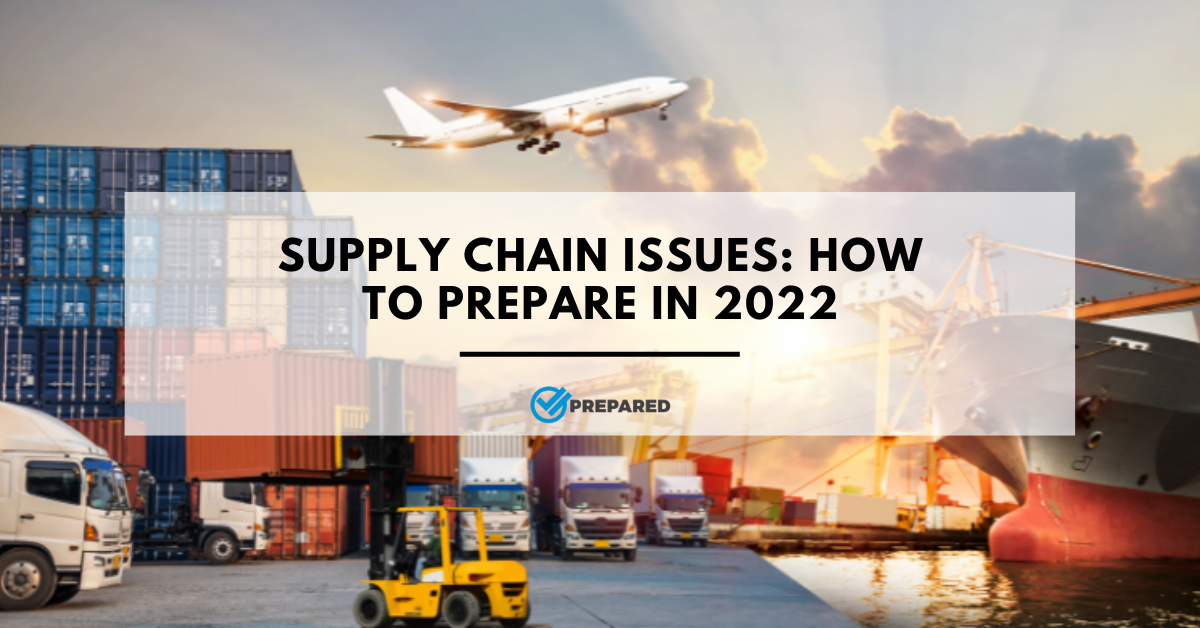If you’ve been having a harder time checking off all the items on your grocery shopping list each week, you’re not imagining it. From diapers to automobiles, paper bags to computer chips, all kinds of products have been difficult to find due to supply chain issues during the COVID-19 pandemic.
In fact, the Federal Reserve’s most recent Beige Book (which is a report on the economy published eight times each year) mentions shortages 80 times – a record-breaking number. There is far more than just anecdotal evidence that shortages are becoming a painful reality in the United States.
However, when it comes to the products lining the grocery store shelves, COVID-19 isn’t the only one to blame. Our consumption habits have changed and so have our overall behaviours.
We are eating out less and cooking more – though it’s better for our health, this has caused inevitable short-term price hikes and shortages. Plus, as shortages become apparent in one area, they serve as a domino effect for others. Take, for example, the automobile shortage. As trucking companies struggle to keep vehicles on the road, fewer products can get to grocery store shelves.
Supply chain issues: A slow-onset disaster?
Many of these supply chain issues resulting in food shortages were set in motion long before the pandemic, too. We are just starting to bear the brunt of them now. America has long relied on cheap goods made abroad, looking for “stuff” that caters to consumers in low-wage economies.
As more and more companies either shut their doors or consolidate into giant monopolies, that means fewer products getting to stores – and getting to you. The products that are available have gone up dramatically in price. Food products are not only more expensive but also harder to find.
So what’s the solution – and how can you manage the supply chain issues resulting in food shortages in your hometown? Here’s what you need to know.
What products might be impacted by supply chain issues?
Supply chain issues tend to impact food products of all kinds. However, some products are more likely to be hit harder than others. As you’ll see in the list below, not all supply chain issues are directly related to the pandemic. Because of this, it can be difficult to predict which products will be in short supply next.
Currently, the most difficult to find products include:
- Chicken – Meat, in general, is hard to find right now, largely due to increased livestock feed costs and supply chain disruptions caused by COVID-19 shutdowns at major meat processing facilities. Plus, as people substitute fast food for home-cooked meals, a reflection of changing habits due to the pandemic, chicken, in particular, has become scarce.
- Coffee – Brazil is a major supplier of much of the world’s coffee but has been experiencing a drought that has affected the growth and transportation of coffee beans.
- Fish sticks – A customs dispute in the U.S.-Canada border has held up Alaska pollock, one of the most commonly used fish species for sandwiches and fish sticks.
- Frozen meals – From Marie Callender’s pot pies to Smart Ones instant meals, frozen meals rely on a lot of plastic and cardboard packaging. Packing materials are in short supply due to shut-downs and disruptions caused by COVID-19.
- Canned goods – Last year, people stocked up on canned goods and manufacturers faced an aluminum shortage as a result. Things like canned vegetables and tomato paste are still tricky to find.
- Pet food – Pet food relies on corn, soy, and meat as its three core ingredients – three ingredients that are all in short supply now.

This list is not exhaustive, of course, and you might notice different types of food in short supply where you live. However, it shows a wide swath of products represented in the shortages instead of just one category of food (like all meat products or all canned goods).
How to Prepare for a Food Shortage
There are a few ways you can prepare for a food shortage while also addressing current limitations. Before you do so, however, remember that there’s no reason to panic buy. Purchase limits are put in place by stores to avoid this phenomenon – a phenomenon that often leads to more extensive supply chain issues and food shortages.
Therefore, it’s important that you buy what you need and then just a small amount extra to store up – that way, you can avoid overtaxing the entire system.
How can families prepare for a food shortage?
Your first step in preparing for a food shortage should be to come up with a comprehensive plan. This should include both the short-term and long-term steps you want to take to safeguard your family’s food supply.
Step 1: Planning: In this plan, be sure to take your family’s needs and preferences into account. Obviously, things like baby formula and canned vegetables should come before Lunchables and Doritos. Estimate how much to stock, factoring in about 2,000 calories per day for each person in your family.
Step 2: Storage: Prepare a storage area in your home – you will want to keep food off the floor and on organized shelves that will make it easy for you to see what you have stored.
Step 3: Buy smart: For items that you can’t safely stockpile, plan ahead. For example, if you know you’re going to want a Thanksgiving turkey, don’t wait until the Wednesday before the holiday to go out and buy it. Most stores will accept pre-orders – as will local farms.
ALSO SEE: Survival Supplies: 5 Reasons to consider freeze-dried food
That’s another point that’s worth noting – if you can, buy locally. Local producers tend to be less affected by supply chain issues than large grocery stores. Buy all the meat, produce, and dairy you can from local farmers.
Not only will you be helping to support them during a time when doing business is more expensive than ever (remember – farmers are responsible for footing the bill for increased livestock feed costs) but you will be getting a better quality product in the long run, too.
What Are the Best Products to Buy When Preparing for a Food Shortage?
Ultimately, choosing foods to buy in the event of a food shortage will vary depending on your family’s preferences and what items are in short supply. As a general rule of thumb, you will want to have some of the following items stored up, since they tend to last a long time and are affordable to stockpile:
- Canned goods (focus first on vegetables, fruits, and meats instead of ready-to-eat meals like pasta)
- Frozen meat
- Rice and pasta
- Dehydrated Foods
- Dry beans
- Flour
- Salt
- Dry cereals
- Infant food
- Peanut butter
You can also consider buying some Meals Ready to Eat (MREs) for convenience and to add variety to your diet.
In Closing: What you can do to prepare for food shortages
While all this sounds quite dark and grim, the good news is that you can take matters into your own hands. There is plenty that you can do to prepare for inevitable food shortages, both now and long into the future.
Educate yourself on disaster preparedness, particularly in the area of food shortages. Books like Food Storage Made Easy by Jodi Moore and Julie Weiss will show you how to buy, preserve, and store enough food to get your family through an emergency.
ALSO SEE: Survival Food: How to Make Hardtack
Try to keep enough food on hand to feed every member of your family for a minimum of one week. While the Red Cross only recommends keeping a three-day supply, this does not account for food shortages. Keep lots of nonperishable foods on hand, including things like uncooked pasta, dry beans, canned goods. Ready-to-eat freeze-dried pouches offer a convenient option for long term food storage and generally have a long shelf-life. The more you store, the better!
Plan ahead and avoid having to pay top dollar for your food – or risk running out of it entirely.

Chris was born and raised in South Africa and has worked in the field of risk management, organisational resilience, and business continuity for more than a decade. During his career he has seen how private and public sector organisations benefit from effective risk management and business continuity planning. Realising that families and communities can also benefit from the same tools, methodologies, and principles, he started Prepare with Foresight.
Prepare with Foresight was launched to assist individuals and families to have the peace of mind that they will be able to recover from and successfully adapt to the consequences of adverse events.

